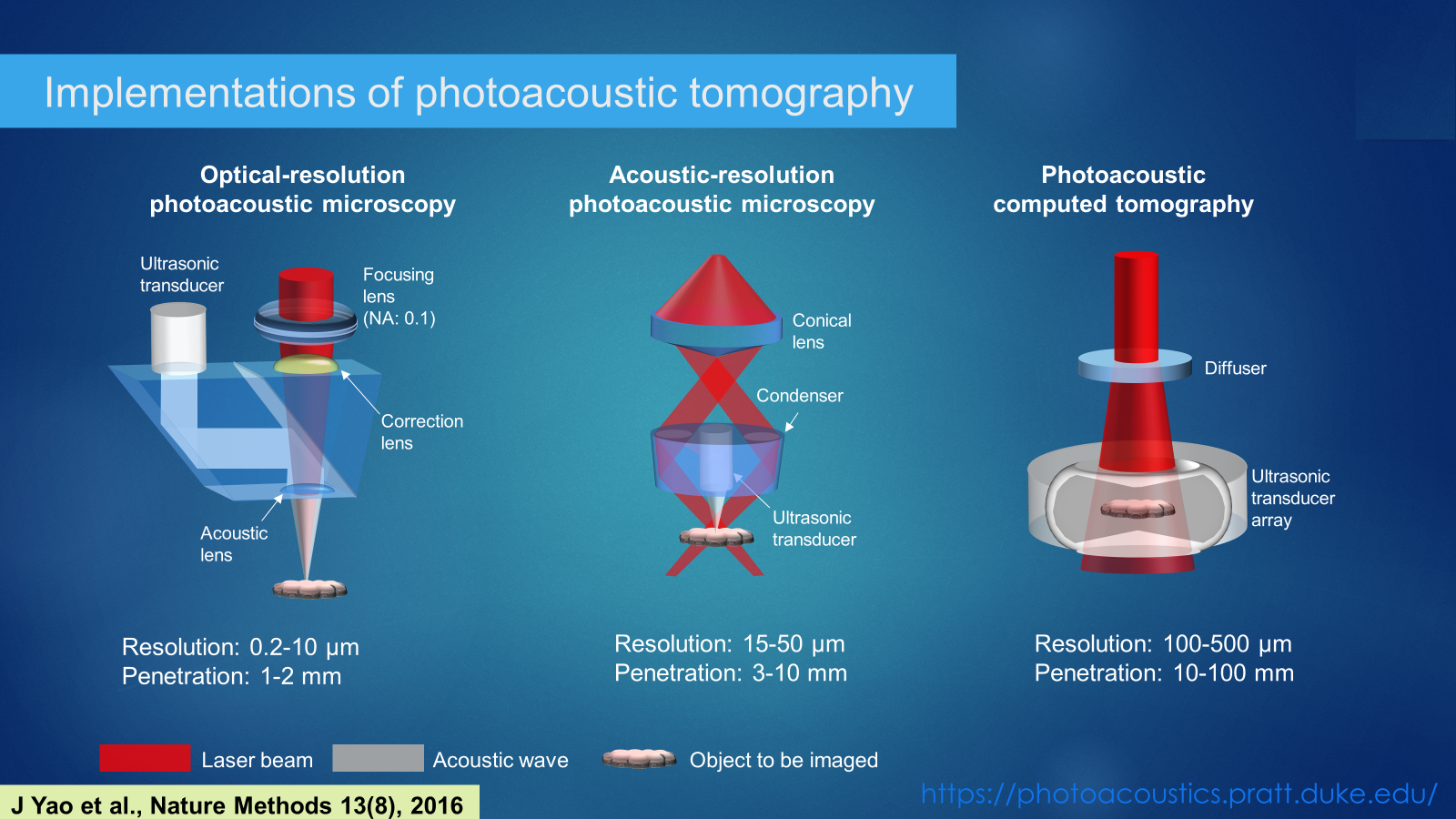Photoacoustic tomography (PAT, also referred to as optoacoustic tomography) has proven capable of multiscale imaging with a consistent contrast mechanism; thus, it is uniquely situated to bridge the microscopic and macroscopic domains in the life sciences. PAT is a hybrid imaging modality that acoustically detects optical absorption contrast via the photoacoustic effect.
In PAT, the imaging process typically starts with a short laser pulse fired at biological tissue. As photons propagate into the tissue, some are absorbed by biomolecules (e.g., hemoglobin, DNA/RNA, lipids, water, melanin, and cytochrome), and their energy is usually partially or completely converted into heat through nonradiative relaxation of excited molecules. The heat-induced pressure wave is detected outside the tissue by an ultrasonic transducer or transducer array to form an image that maps the original optical energy deposition inside the tissue. PAT has a 100% relative sensitivity to small optical absorption variations, which means a given percentage change in the optical absorption coefficient yields the same percentage change in the PA signal amplitude. By contrast, back-scattering-based confocal microscopy has a relative sensitivity to optical absorption of only ~6% at 560 nm and ~0.08% at 800 nm in blood. Because PAT does not rely on fluorescence emission of molecules, which usually has a quantum yield less than 100%, it can image nearly all molecules, fluorescent or not.
The seamless combination of optical excitation with ultrasonic detection offers three striking advantages: (1) PAT is maximally sensitive to the rich optical absorption contrast of biological tissue, and it is inherently well suited for functional, molecular, metabolic and histologic imaging through endogenous contrast and for molecular and neuronal imaging through exogenous contrast; (2) Because biological tissue is orders of magnitude more transparent to sound than to light in terms of scattering mean free path, PAT provides far greater penetration with a scalable spatial resolution than optical microscopy; (3) PAT is highly complementary to and compatible with other imaging modalities, especially optical imaging and ultrasound imaging. PAT-enhanced multi-modal imaging can provide rich complementary contrasts for comprehensive understanding of biological phenomena.





